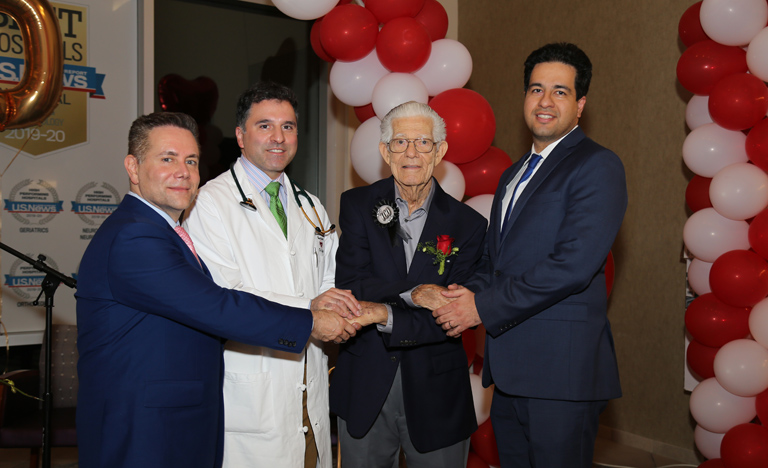
Adventist Health Glendale celebrated the first 100 successful cases of transcatheter aortic valve replacement surgery (TAVR). Transcatheter aortic valve replacement has changed the lives of more than 100 patients at Adventist Health Glendale since the procedure was introduced in October 2016.
The TAVR team of interventional cardiologist and cardiothoracic surgeons at Adventist Health Glendale enables patients with severe aortic stenosis to receive a new heart valve without undergoing open-heart surgery. Aortic stenosis (AS) is a condition in which progressive obstruction of blood flow across the aortic valve results in pressure hypertrophy of the left ventricle and can present as classic symptoms of angina, heart failure and even sudden death. The echocardiogram is the standard for identifying severe aortic stenosis.
This procedure is fairly new and is FDA approved for people with symptomatic aortic stenosis who are considered an intermediate or high-risk patient for standard valve replacement surgery. The differences in the two procedures are significant.
Usually valve replacement requires an open heart procedure with a “sternotomy” in which the chest is surgically separated (open) for the procedure. The TAVR procedure is minimally invasive and primarily uses the transfemoral approach. This approach goes through a small opening in the groin area, like a heart catheterization for a much faster recovery time.
The TAVR procedure is performed in a hybrid operating room. The main goal of the valve clinic is to ensure patients undergo comprehensive evaluation by a multi-disciplinary heart team including an interventional cardiologist and two cardiothoracic surgeons. Through the valve clinic, patients receive timely follow-up to manage disease progression as well as appropriate treatment.
